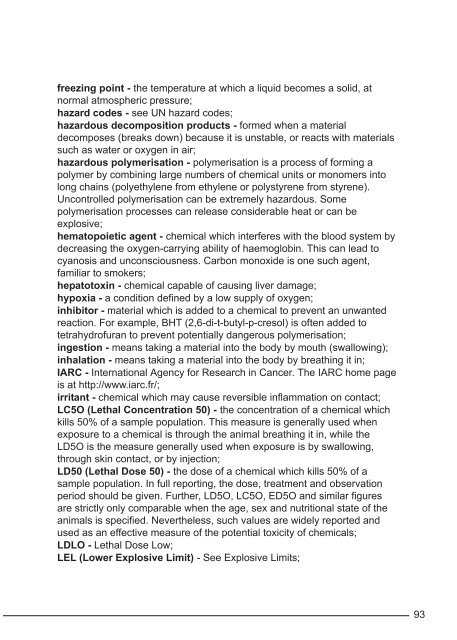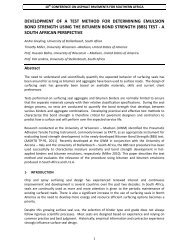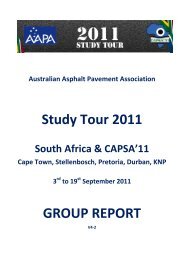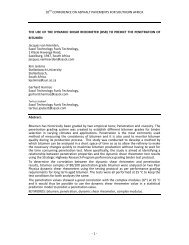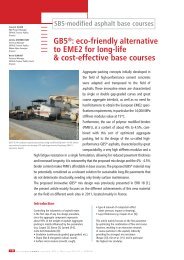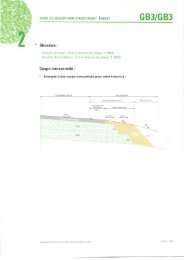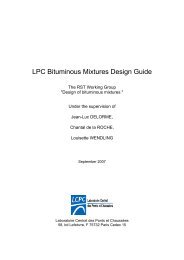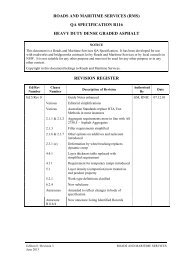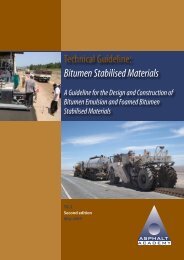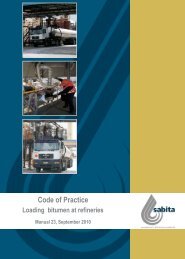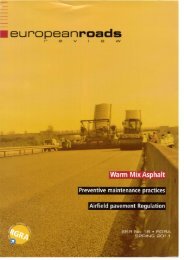Guide to the safe handling of solvents in a bituminous ... - Aapaq.org
Guide to the safe handling of solvents in a bituminous ... - Aapaq.org
Guide to the safe handling of solvents in a bituminous ... - Aapaq.org
- No tags were found...
Create successful ePaper yourself
Turn your PDF publications into a flip-book with our unique Google optimized e-Paper software.
freez<strong>in</strong>g po<strong>in</strong>t - <strong>the</strong> temperature at which a liquid becomes a solid, atnormal atmospheric pressure;hazard codes - see UN hazard codes;hazardous decomposition products - formed when a materialdecomposes (breaks down) because it is unstable, or reacts with materialssuch as water or oxygen <strong>in</strong> air;hazardous polymerisation - polymerisation is a process <strong>of</strong> form<strong>in</strong>g apolymer by comb<strong>in</strong><strong>in</strong>g large numbers <strong>of</strong> chemical units or monomers <strong>in</strong><strong>to</strong>long cha<strong>in</strong>s (polyethylene from ethylene or polystyrene from styrene).Uncontrolled polymerisation can be extremely hazardous. Somepolymerisation processes can release considerable heat or can beexplosive;hema<strong>to</strong>poietic agent - chemical which <strong>in</strong>terferes with <strong>the</strong> blood system bydecreas<strong>in</strong>g <strong>the</strong> oxygen-carry<strong>in</strong>g ability <strong>of</strong> haemoglob<strong>in</strong>. This can lead <strong>to</strong>cyanosis and unconsciousness. Carbon monoxide is one such agent,familiar <strong>to</strong> smokers;hepa<strong>to</strong><strong>to</strong>x<strong>in</strong> - chemical capable <strong>of</strong> caus<strong>in</strong>g liver damage;hypoxia - a condition def<strong>in</strong>ed by a low supply <strong>of</strong> oxygen;<strong>in</strong>hibi<strong>to</strong>r - material which is added <strong>to</strong> a chemical <strong>to</strong> prevent an unwantedreaction. For example, BHT (2,6-di-t-butyl-p-cresol) is <strong>of</strong>ten added <strong>to</strong>tetrahydr<strong>of</strong>uran <strong>to</strong> prevent potentially dangerous polymerisation;<strong>in</strong>gestion - means tak<strong>in</strong>g a material <strong>in</strong><strong>to</strong> <strong>the</strong> body by mouth (swallow<strong>in</strong>g);<strong>in</strong>halation - means tak<strong>in</strong>g a material <strong>in</strong><strong>to</strong> <strong>the</strong> body by breath<strong>in</strong>g it <strong>in</strong>;IARC - International Agency for Research <strong>in</strong> Cancer. The IARC home pageis at http://www.iarc.fr/;irritant - chemical which may cause reversible <strong>in</strong>flammation on contact;LC5O (Lethal Concentration 50) - <strong>the</strong> concentration <strong>of</strong> a chemical whichkills 50% <strong>of</strong> a sample population. This measure is generally used whenexposure <strong>to</strong> a chemical is through <strong>the</strong> animal breath<strong>in</strong>g it <strong>in</strong>, while <strong>the</strong>LD5O is <strong>the</strong> measure generally used when exposure is by swallow<strong>in</strong>g,through sk<strong>in</strong> contact, or by <strong>in</strong>jection;LD50 (Lethal Dose 50) - <strong>the</strong> dose <strong>of</strong> a chemical which kills 50% <strong>of</strong> asample population. In full report<strong>in</strong>g, <strong>the</strong> dose, treatment and observationperiod should be given. Fur<strong>the</strong>r, LD5O, LC5O, ED5O and similar figuresare strictly only comparable when <strong>the</strong> age, sex and nutritional state <strong>of</strong> <strong>the</strong>animals is specified. Never<strong>the</strong>less, such values are widely reported andused as an effective measure <strong>of</strong> <strong>the</strong> potential <strong>to</strong>xicity <strong>of</strong> chemicals;LDLO - Lethal Dose Low;LEL (Lower Explosive Limit) - See Explosive Limits;93


